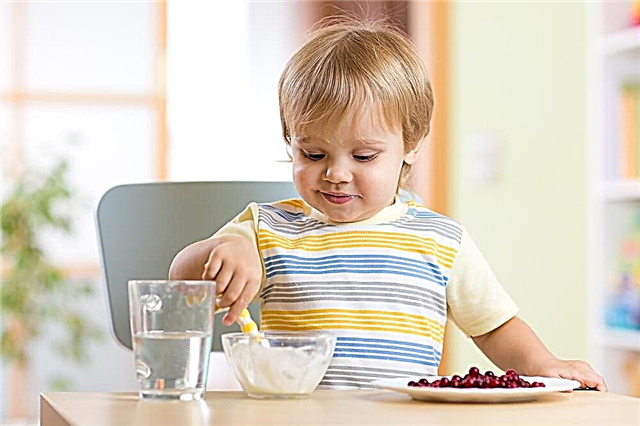Bottles for newborns are a must, regardless of whether the baby is breastfed or on formula. The task of parents is to choose an easy-to-use, safe and high-quality product for their baby. To do this, you need to figure out which bottles are best for newborns, and what the modern market offers.

A feeding bottle is the first thing to get after giving birth.
Which bottles are better
When choosing a bottle, you should pay particular attention to the following significant characteristics of the product:
- the form;
- volume;
- material of manufacture;
- type of nipple;
- the presence or absence of an anti-colic system;
- scale accuracy;
- the convenience of use.
When choosing which bottles for feeding for newborns are better, it should be understood that the health of the baby and his development will largely depend on the correctness of the decision made.
Glass or plastic: which is better
Before wondering how to accustom a child to a bottle and teach him to hold it on his own, you should decide which material the bottle will be better from: glass or plastic. On sale both options are presented in a wide range.

Glass containers can be purchased at any pharmacy
The main advantage that a glass product has is its absolute safety and harmlessness. This is due to the fact that glass is an inert material that does not interact with any other substances and compounds. Glass feeding bottles for newborns can be safely heated or even boiled. In addition, they are air tight and have a long service life. The pattern applied to such a container is not erased either after a month or after a year of active use. The only disadvantage of glass baby feeding bottles is that they are not too resistant to mechanical stress.
Important! Bottles made of glass are heavy enough that the mother will have to feed the baby. The kid may not hold the container in his handles.
Plastic weighs less, does not break and can be made in the most bizarre shapes. This option will be optimal when the child is already starting to hold the bottle himself. Despite the fact that the plastic container perfectly tolerates the effects of boiling water, it can become stained with the action of the coloring components of juice, compote or soup.

When buying a plastic product, special attention should be paid to its quality.
Important! Buying plastic containers should be done with great care - cheap options can be dangerous for children's health.
Anti-colic system
Most novice parents spend a lot of time looking for an answer to the question of which bottle is best for a newborn. There is no one size fits all solution. Any doctor who specializes in pediatrics is likely to recommend starting with an anti-colic bottle for newborns.
On sale you can find two options for this kind of product:
- simple bottles with an air channel inside the nipple;
- complex systems that completely exclude incorrect feeding.
The use of an anti-colic system is recommended from the moment the baby is born, especially if the baby is artificially fed.
The simplest bottles with a tube in the nipple have a low cost, but their reliability indicator is low. They often leak and baby formula or other food is spilled.

Anti-colic systems are a particularly highly demanded product
An expensive anti-colic set almost completely eliminates the possibility of leakage. But he also has disadvantages. Such systems are very difficult to clean properly. As a result, the remains of baby food accumulate in hard-to-reach places, which can potentially pose a danger to the health of the child.
Any anti-colic bottle must be accompanied by instructions. It should be studied so that later, due to improper use, you do not wonder why the child does not take the bottle, and what to do in this case.
In addition, you should follow some simple rules:
- at the end of the feeding, immediately clean the bottle and avoid the accumulation of food debris;
- keep the container open at room temperature;
- sterilize the bottle before each use;
- constantly check the functionality of the valve and its integrity;
- periodically inspect the nipple for cracks and mechanical damage.
How many bottles does a newborn baby need
A bottle-fed newborn will need at least six containers:
- containers with teats for mixtures 250 ml - 4 pcs. (to have time to sterilize them);
- 100 ml containers for water - 2 pcs.
Do not assume that you will not need bottles when breastfeeding. You will have to buy at least a couple of small (100 ml) water containers and a couple of larger bottles. The latter can be taken with you on the road or used when introducing complementary foods.
When deciding which particular bottle to choose for a newborn, it is recommended to adhere to the following recommendations:
- containers should be chosen narrow and thin (the baby can hold them himself, they are suitable for both water and mixtures);
- nipples should be chosen wide, physiological;
- the bottle must be unbreakable.
How many bottles do you need in 3 months
By the time the baby reaches three months of age, the bottles purchased for his birth will need to be replaced. Their number will not change, but the nipple will need to be purchased with a different one - with several holes. The swallowing functions of a child by this age are already sufficiently developed so that he does not begin to choke and gag, if he does not make an effort when sucking. In addition, you need to buy a nipple with one sufficiently large hole from which you can feed the baby with porridge.

The bottle should be baby-friendly first.
Important! Experts recommend not only regularly sterilizing nipples, but also changing them at the following frequency: latex - once every 2 months, silicone - once every 3 months.
Rating of the best bottles
Facing the need to solve the problem of how to quickly accustom a baby to a bottle after breastfeeding, most parents carefully study the rating of the most popular options. Some of the best baby containers include:
Nuk first choise
The capacity of the manufacturer is versatile and suitable for any baby age up to a year. The bottle is made of high quality safe plastic. Its shape is ergonomic and comfortable for feeding. Indelible gradation is applied to the surface.
Dr browns
Dr Browns offers another decent option for quickly transferring an infant to artificial feeding. This is an anti-colic bottle with a patented ventilation system, from which the baby can both eat and drink. The teat has a physiological shape, which allows the transition to artificial feeding as quickly and efficiently as possible.
Philips Avent Natural
It's no exaggeration to call this bottle the most popular on the market. Water and food are not spilled from it. The container itself is ergonomic, easy to assemble and clean. The model is suitable for both newborns and older children. Consumers especially emphasize the durability of the product and the affordable cost.
What else to consider when choosing
Having figured out how many containers are needed for feeding a baby and having clarified what they can be, it will not be superfluous to get information and what else you should pay attention to when choosing such baby products as a thermal bottle or an anti-colic system. These are the following points:
- the diameter of the neck (ideally, if it is the same - you do not have to select a separate suitable nipple for each container);
- the shape of the container (should fit the baby in the hands);
- the presence of handles;
- manufacturer (it is recommended to refuse to purchase products of unknown companies with products of dubious quality).
Features of the choice of nipples
If in Soviet times all commercially available nipples were rubber, today these products are made mainly of silicone or latex.
Latex products are softer, but they quickly deteriorate and require frequent replacement. Silicone nipples are slightly harder and more durable.
Which shape to choose
Choosing the right nipple is just as important as choosing a bottle. In form, they can be:
- oval (for containers with a narrow neck);
- classic round (as much as possible imitating the mother's breast);
- orthodontic (anatomical);
- anti-colic (prevent air from entering the baby's stomach).
The choice of form is an individual matter. Often you have to experiment before you find a nipple option that suits both mommy and baby alike.

Bottle nipples are made from safe materials
Nipple hole size
The size and number of holes in the nipple determines the rate at which the mixture flows. For newborns, it is recommended to take nipples with one small round hole located on the side and preventing liquid from entering the baby's throat directly. Towards the age of one month, you can opt for a slow drainage teat with two holes. When an infant reaches 6 months of age, it is common to use medium to fast flow nipples with 3-4 holes.
There are universal varieties in which a small incision is made instead of a hole, and the flow rate depends on how the bottle is turned.
The modern market is replete with a variety of offers of containers for babies and a nipple for them, so there should be no problems with choosing the right one. It may take some time and effort to find the perfect one. Most importantly, you should not try to save money on purchases and pay attention to bottles of dubious quality.



